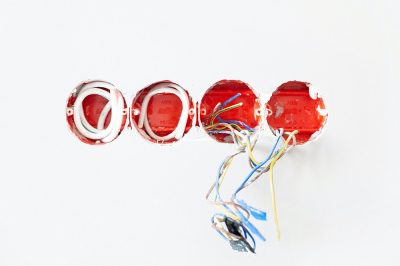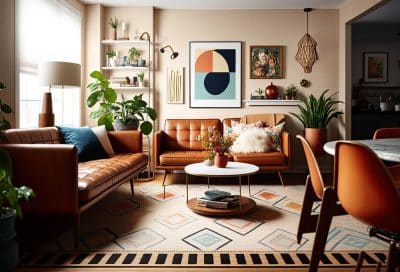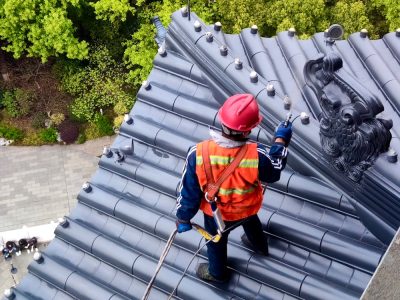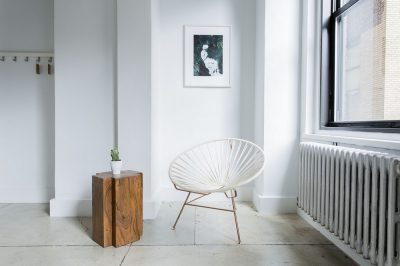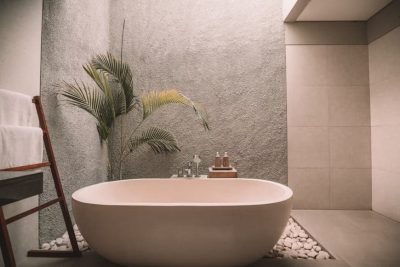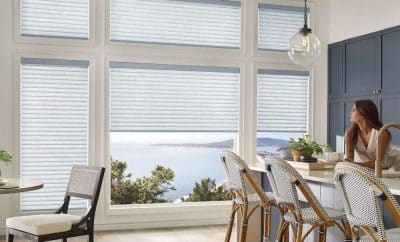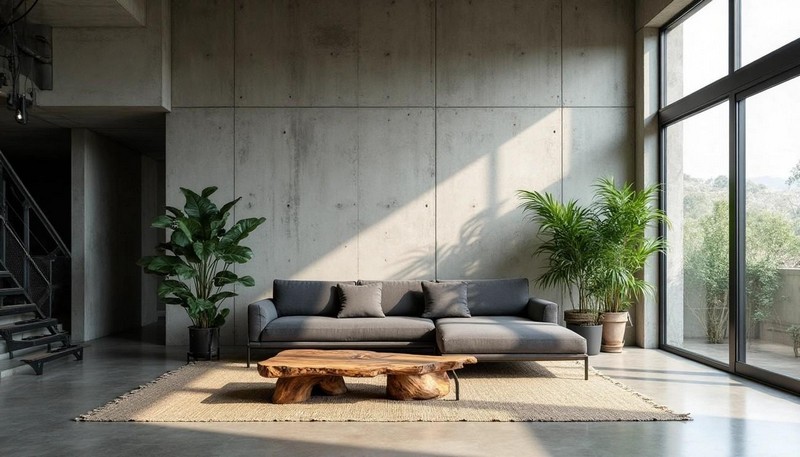
Eco brutalism interior design redefines our understanding of beauty by merging raw structure with thoughtful simplicity. Originally emerging in the mid-20th century, traditional brutalism was known for its exposed concrete, massive forms, and complete absence of ornamentation. Today, the style has evolved into something more refined, viewed through a sustainable and nature-aware lens.
This modern interpretation pairs the boldness of brutalist architecture with the quiet elegance of minimalist art, creating a philosophy that is both functional and expressive. What sets this approach apart is the balance it strikes between industrial materials like concrete and the inviting warmth of natural wood.
This article looks at how eco brutalism has grown from its utilitarian roots into a sophisticated design language. By combining raw textures with environmentally conscious details, it offers a compelling option for those seeking interiors that are bold, serene, and deeply connected to the natural world.
What is Eco Brutalism Interior Design?
Brutalist interior design showcases a bold architectural style that values honest materials and form. The combination with eco-friendly elements creates an interesting interior style that homeowners who care about the environment increasingly prefer.
Origins of brutalism and its rise
Cities needed affordable ways to rebuild after World War II, and brutalism emerged as the answer. The name comes from “béton brut” (raw concrete) in French, which architect Le Corbusier used to describe the unfinished concrete in his influential Unité d’Habitation project in 1952. Le Corbusier saw architecture beyond just shelter – he called it “a machine for living in” and emphasized how design shapes our daily lives.
British architectural critic Reyner Banham gave the style its official name “Brutalism” in his 1955 essay for Architectural Review. This style focused on function, exposed materials, and geometric forms to break away from decorative traditions. Brutalism spread worldwide during the 1960s and 1970s, showing up in government buildings, universities, and social housing projects.
Modern interiors embrace eco-friendly design
Modern eco brutalism interior design brings back these mid-century ideas with a vital difference: environmental awareness. This new approach combines brutalism’s raw, minimalist elements with eco-friendly practices and natural features.
Eco brutalism creates softer spaces through:
- Plants and nature-inspired design elements
- Eco-friendly, recycled, or low-carbon materials
- Natural light and passive design techniques
- Organic curves instead of sharp angles
Key differences from traditional brutalism
Traditional brutalism often seemed cold and unwelcoming, but eco brutalism creates inviting spaces. The main differences stand out:
Material choices are different now. Original brutalism used mostly concrete, but eco brutalism adds recycled concrete, reclaimed wood, salvaged steel, and natural stone. Some projects use low-carbon alternatives like fly ash or slag instead of traditional concrete.
Eco brutalism balances exposed structural elements with natural additions. Hard surfaces pair with organic textures – wooden shelving next to concrete walls or stone countertops under indoor plants create this balance.
Energy efficiency matters more in eco brutalism. Brutalist design’s thick concrete walls keep indoor temperatures stable without using much energy. Modern sustainable technologies like passive cooling systems make these spaces even more efficient.
Core Elements of Eco Brutalist Interiors
Eco brutalist interiors combine rugged materials with sustainable thinking, resulting in spaces that are both striking and environmentally responsible.
The following core elements define this style:
- Raw materials like concrete, steel, and stone: Exposed concrete forms the backbone of eco brutalist spaces, offering both visual weight and energy efficiency. With insulation values between R-14 and R-20, concrete can significantly reduce heating and cooling needs. Steel and stone contribute industrial character and long-lasting durability.
- Natural elements such as wood, plants, and water: Reclaimed wood softens the look of concrete, while indoor plants like snake plants, succulents, and fiddle-leaf figs introduce life and contrast. These organic accents create a balanced tension between nature and structure.
- Open layouts filled with natural light: Spacious floor plans promote easy movement and passive cooling. Large windows and skylights bring in daylight, casting textured shadows across surfaces and reducing the need for artificial lighting.
- Minimalist artwork as a finishing touch: A single piece of minimalist canvas art can become the focal point of the room, especially when placed against a raw concrete wall. Simple yet bold, this type of artwork complements the space without competing with architectural elements.
- Muted and earthy color palettes: Shades of gray, white, black, and beige dominate the eco brutalist palette. These understated tones allow materials and textures to shine, supporting the overall feeling of calm and cohesion.
How to Design an Eco Brutalist Interior
A successful eco brutalist interior strikes a delicate balance between raw industrial elements and natural warmth. This design philosophy celebrates contrasts – harsh concrete meets soft greenery, and monolithic structures blend with organic forms.
Start with structural honesty
Structural transparency forms the foundation of eco brutalist interior design. Raw concrete surfaces, modular geometry, and unfinished materials should serve as your starting point. These elements shine best when left visible instead of hidden behind decorative covers. Concrete walls make a bold statement and act as thermal masses that help maintain steady indoor temperatures while reducing energy use.
You might want to look at eco-friendly concrete admixtures or finishes that boost thermal performance. This design approach stays true to brutalism’s core philosophy and adds sustainable benefits.
Balance hard surfaces with organic textures
The true beauty of eco brutalism emerges when contrasting textures meet. Here’s how to soften the industrial atmosphere:
- Raw wood, rattan, and cork bring warmth and authenticity to the space
- Living walls, planters, or rooftop gardens add extensive vegetation
- Linen, cotton, and wool create layers of tactile comfort
This blend does more than beautify harsh surfaces – it purifies the air and boosts occupant wellbeing. Plants help reduce heat absorption and create wildlife habitats. The dramatic interplay between concrete and greenery creates that distinctive eco brutalist esthetic.
Use minimalist furniture with purpose
Your eco brutalist space needs purposeful furnishing. The focus should be on functional design with natural and repurposed materials rather than filling spaces with unnecessary pieces. Here are some ideas:
- Wooden shelves against concrete walls
- Stone countertops that highlight exposed structural elements
- Furniture made from recycled materials
Large windows and open layouts help maximize natural light and airflow. This creates spaces that feel minimalist yet connected to nature. Choose neutral shades like concrete gray, terracotta, and earthy tones for your planters and décor to tie everything together.
Why Eco Brutalism is Gaining Popularity
Eco brutalism interiors are winning people over with their practical benefits and mental advantages. These designs are a great way to get solutions to modern challenges as sustainability moves from being a trend to becoming necessary in construction.
Sustainability and low maintenance
Durability is the biggest advantage of eco brutalist structures. These buildings need much less upkeep over time. The main reason is concrete’s longevity—it reaches 99% of its strength after just 28 days and becomes fully strong within one to two years. This durability means fewer resources are needed throughout a building’s life.
Concrete walls can cut heating and cooling costs by up to 50% because of their excellent thermal conductivity. The Barbican Center—a brutalist icon—shows how these structures can achieve net-zero carbon emissions by switching to 100% renewable energy.
The environmental benefits extend further:
- Improved air quality through plant integration
- Reduced heat absorption in urban environments
- Better biodiversity through thoughtful landscaping
- Smart water management through rainwater collection
Emotional calm through minimalism
The way eco brutalist interiors affect our psychology is remarkable. Their minimalist design creates spaces free from visual noise and reduces cognitive overload. This simplicity helps create mental clarity—something precious in our overstimulated world.
Japanese philosophy shapes this aspect of eco brutalism. Concepts like Danshari encourage us to let go of physical and mental burdens. Many people find deep calm in the unique balance created by raw concrete and living plants.
The hashtag #ecobrutalism has gained substantial popularity across social media platforms. This shows how the style appeals to younger generations who want both a unique look and environmental responsibility.
People worry about concrete’s carbon footprint. However, eco brutalism has become truly forward-thinking by using recycled materials, energy-efficient technologies, and sustainable production processes. This blend of bold design principles and environmental awareness points to an exciting future for interior design.
Conclusion
Eco brutalism is more than a design trend—it’s a thoughtful response to the demands of modern living. By blending the raw strength of brutalist materials with the warmth of nature and the clarity of minimalist expression, this style creates spaces that feel grounded, efficient, and emotionally calming.
It appeals to those who value sustainability without sacrificing bold aesthetics, offering interiors that feel both sculptural and serene. As we continue to seek balance between innovation and environmental responsibility, eco brutalism proves that even the most rugged materials can be part of a refined, livable home. For homeowners and designers alike, it presents a powerful way to build beauty with intention.

